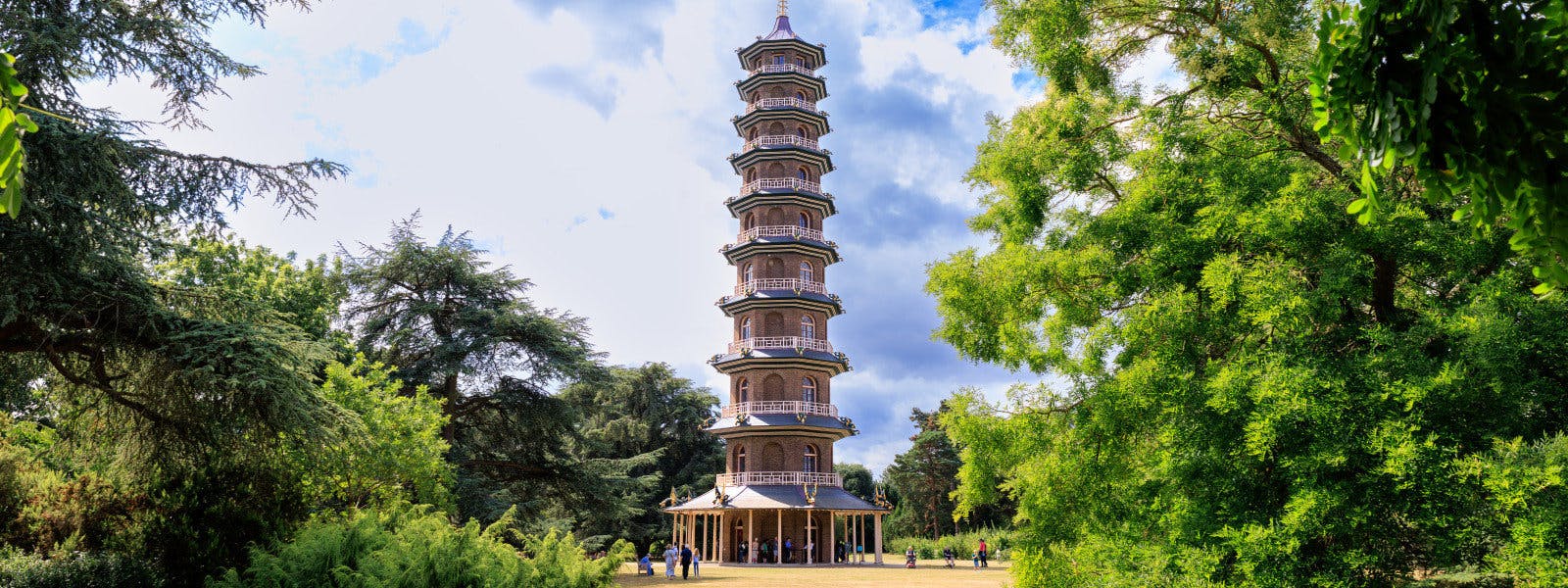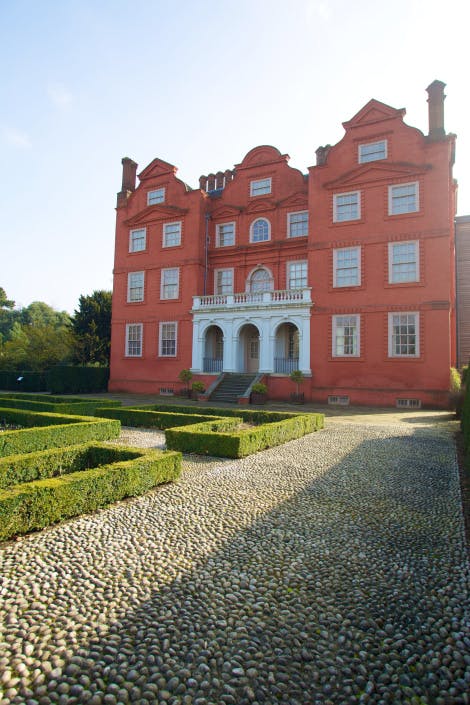
Skip the event ticket details and go to event summary.
When
Closed
Where
Located inside Kew Gardens
Ticketing information
Pagoda tickets can be booked along with your Kew Gardens tickets in advance from the Kew Gardens website.
Separate ticket
Buy ticketsHistoric Royal Palaces in partnership with Royal Botanic Gardens Kew, have completed a major conservation project which has seen the Great Pagoda returned to its 18th-century splendour and re-opened to the public as a permanent exhibition.
Climb the 253 steps to the top of the Great Pagoda and marvel at spectacular views across London. As you climb, learn why the Pagoda was built and how the royal family used this unique building in the 18th century.
Important information
- The Great Pagoda is a challenging climb of 253 steps.
- Please do not attempt the climb if you have any health conditions you feel may be made worse by the experience.
- Children under 5 years old are not permitted above the ground floor due to safety restrictions.
- In order to preserve the historic fabric of the building, large bags* may not be brought inside.
- Pagoda tickets are only valid for the date and time you have selected. This is due to the limited capacity of the building.
*Bags larger than standard aircraft carry-on size.
Private Pagoda tours
See more information on private tours of the Pagoda.
Watch the Great Pagoda at Kew unveiled
Originally built in 1762, the Pagoda was restored to its former splendour in 2018. Adorning the building are 80 dragons, once lost for 200 years and now back using 3D printing technology and hand wood carving techniques. 253 steps lead you to the top of the Pagoda with enviable views over London.
This content is hosted on YouTube
This content may be using cookies and other technologies for which we need your consent before loading. To view the content, you need to enable cookies for "Targeting Cookies & Other Technologies".
Manage CookiesVideo transcript of the Great Pagoda at Kew unveiled
Follow along with an interactive transcript of the Great Pagoda at Kew Unveiled on YouTube. A link to open the transcript can be found in the description.
The history of the Pagoda

The Great Pagoda was designed in the 18th century by English architect Sir William Chambers for the royal family. Chambers visited China twice and he was inspired by the buildings he saw; his designs for the Great Pagoda were influenced by prints he had seen there of the famous Porcelain Pagoda at Nanjing.
The Great Pagoda was the largest and most ambitious building in a 'royal circuit' of 16 structures displaying architectural styles from around the world built in the royal garden at Kew.
Once completed in 1762, the 163ft tall building was so exotic that a suspicious public were unconvinced it would remain standing.
Pagodas are revered in traditional Chinese culture as the repository of relics or sacred writings and as place for contemplation. The Kew Pagoda was inspired by the porcelain Pagoda at Nanjing — one of the wonders of the medieval world — and is not designed as a religious monument; rather it was intended to be a window for the British people into Chinese culture.
The Great Pagoda at Kew was originally far more colourful than it is today, and was once adorned with 80 'iridescent' wooden dragons, which were removed in 1784 when repairs were undertaken to the building's roof.
None of the 80 dragons appear to have survived, beginning a 200 year hunt to rediscover and replace them. Historic Royal Palaces has restored the dragons to the Pagoda once more, as part of this major conservation project.
Find out how we brought dragons back to KewExplore what's on

- Things to see
The Royal Kitchens
Get an insight into life 'below stairs' at Kew Palace in the Royal Kitchens, preserved as they were in 1818 during the reign of George III.
-
Closed
- Kew Palace
- Included in Kew Gardens admission

- Things to see
Queen Charlotte's Cottage
Discover a queen's rustic country retreat in the grounds of Kew Palace with a visit to Queen Charlotte’s Cottage.
-
Closed for winter
- Kew Palace
- Included in Kew Gardens admission

- Things to see
Kitchen Garden
Wander through the edible Kitchen Garden at Kew - a veritable sanctuary for wildlife, created to serve the royal family when staying at Kew Palace.
-
Closed for winter
- Kew Palace
- Included in palace admission (Members go free)
Browse more history and stories

The story of Kew Palace
Britain's smallest royal palace and George III's private retreat

George III
Dutiful, intelligent and cultured, but cruelly labelled ‘mad’

The royal kitchens at Kew
The kitchens have survived, practically untouched
Shop online

Shop Kew Palace
Explore our exquisite collection of luxury gifts, souvenirs and homewares inspired by Kew Palace and its rich history.
From £4.50

Shop Homewares
Explore our collection of stylish home accessories and furnishings, including cushions, tapestries, glassware and much more.
From £3.50

Shop Georgians
Inspired by this time of elegance and enlightenment, our Georgian collection features books, luxury gifts, exquisite jewellery and more.
From £5.00
